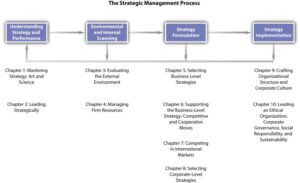
Overcoming sales objections is a pivotal skill for sales professionals, transforming challenges into opportunities for engagement and success. By understanding the nature of objections and employing strategic techniques, sellers can navigate through potential hurdles and foster stronger client relationships.
This guide delves into the intricacies of sales objections, exploring common types, effective strategies for overcoming them, and the vital role of innovation and effective communication in the process.
Understanding Sales Objections
Sales objections are challenges or concerns raised by potential customers during the sales process. They are significant because they provide insight into the customer’s mindset and can indicate whether a product or service aligns with their needs. By understanding and addressing these objections effectively, sales professionals can enhance their chances of closing deals and building lasting relationships.Common types of sales objections include price concerns, product fit, timing issues, and competition.
Recognizing these objections early is crucial as it allows sales professionals to pivot their pitch and tailor their approach to directly address the customer’s hesitations, ultimately enhancing sales performance.
Common Types of Sales Objections
Sales professionals often encounter several types of objections, which can be categorized as follows:
- Price Objections: Customers often express concern over whether a product or service is worth the investment.
- Product Fit: Potential customers may question whether the product meets their specific needs.
- Timing Issues: Some customers may feel that the timing is not right for them to make a purchase.
- Competition: Customers might cite competitors as a reason for hesitation, particularly if they perceive better value or service elsewhere.
Recognizing Objections Early
By actively listening and asking probing questions, sales professionals can recognize objections early in the conversation. This proactive approach allows them to tailor their responses and offers to better align with the customer’s needs and concerns, ultimately leading to a more effective sales process.
Strategies for Overcoming Sales Objections
Overcoming sales objections requires a strategic approach. Effective techniques can make a significant difference in how objections are handled, fostering a better connection with potential clients.
- Empathize: Show understanding towards the customer’s concerns. This builds trust and rapport.
- Clarify: Ask questions to ensure you fully understand the objection before responding.
- Provide Evidence: Use case studies, testimonials, or statistics that demonstrate how your product has successfully addressed similar issues for other clients.
- Reframe the Objection: Turn the objection into a point of discussion that highlights the benefits of your product.
Empathizing with Potential Clients
Empathy is key when addressing objections. When clients express concerns, acknowledging their feelings and providing reassurance can be powerful. For instance, if a customer is hesitant due to budget constraints, it’s beneficial to recognize their situation and discuss flexible payment options or value-added benefits that justify the investment.
Developing Responses
Creating a framework for responses to specific objections is vital. Sales teams should research common objections within their industry and develop standard responses tailored to each. This not only prepares them for real-life scenarios but also boosts their confidence during client interactions.
The Role of Business Innovation in Selling
Innovation plays a crucial role in the sales process, especially in how objections are handled. By embracing innovative solutions, businesses can not only enhance their offerings but also alleviate common concerns raised by customers.
Impact of Innovation on Sales
Innovative products or services tend to attract more attention and can minimize objections. For example, companies that leverage technology to improve customer experience often see a reduction in objections related to usability or features.
Examples of Successful Innovation
Several businesses have successfully integrated innovation into their sales strategies. For instance, a tech company that regularly updates its software based on user feedback reduces objections related to product functionality and relevance.
Integrating Innovative Solutions
To integrate innovative solutions into sales strategies, businesses should encourage continuous feedback from their sales teams. This can lead to the development of new features or services that directly address customer objections, making the sales process smoother.
Sales Management Techniques
Effective management practices can significantly support sales teams in overcoming objections. Recognizing the challenges faced by sales personnel is the first step toward implementing effective strategies.
Supporting Sales Teams
Management should ensure that sales teams have access to the training, resources, and tools they need to address objections proactively. This includes providing up-to-date market research, sales materials, and access to customer relationship management (CRM) systems.
Sales Training Programs
Investing in training programs focused on objection handling is essential. These programs should equip sales teams with the skills to respond effectively to various types of objections, improving their overall performance and confidence.
Performance Metrics

Establishing performance metrics related to objection handling can also enhance sales success. Metrics such as the objection resolution rate or customer satisfaction post-interaction allow management to gauge the effectiveness of sales strategies and make necessary adjustments.
Impact of Marketing Direct on Sales Objections
Targeted marketing can effectively preemptively address common objections, making it easier for sales teams to engage with potential customers.
Targeted Marketing Strategies
Marketing campaigns designed to resonate with specific customer pain points can significantly reduce objections. For instance, a targeted campaign that highlights specific product features relevant to a particular audience can diminish concerns regarding product fit.
Successful Direct Marketing Campaigns
An example of a successful direct marketing campaign is a software company that ran ads showcasing user testimonials directly addressing typical objections about usability and support. This proactive approach led to decreased objections during sales interactions.
Aligning Sales and Marketing Efforts
Collaboration between sales and marketing teams is crucial. Regular meetings to discuss objections encountered in the field, combined with marketing strategies aimed at mitigating these issues, can lead to a more cohesive approach and fewer objections overall.
Business Networking for Overcoming Objections
Networking is a powerful tool for sales professionals, as it helps to build rapport and trust, which can significantly reduce objections.
Benefits of Networking
Building a strong network not only enhances credibility but also provides sales professionals with resources and referrals that can alleviate customer concerns. When potential clients see that a salesperson has a solid reputation, they are more likely to trust their recommendations.
Effective Networking Strategies
Sales professionals should consider the following networking strategies:
- Attend Industry Events: Engage in workshops and conferences to expand your professional circle.
- Leverage Social Media: Use platforms like LinkedIn to connect with industry leaders and potential clients.
- Join Professional Groups: Participate in organizations that align with your industry to build relationships.
Case Studies of Successful Networking
Many sales professionals have experienced significant results from networking. For example, a salesperson who regularly attends local business meetups reported an increase in referrals and a notable decrease in objections during sales calls, as prospects felt more connected and informed.
Effective Business Presentations
Crafting persuasive presentations is essential for mitigating objections and effectively conveying value to potential customers.
Guidelines for Crafting Presentations
To create impactful presentations, sales professionals should focus on the following aspects:
- Clear Structure: Organize content logically to guide the audience through your pitch.
- Engaging Visuals: Use visuals that support your message and maintain audience interest.
- Concise Messaging: Keep slides and language clear and to the point to avoid overwhelming the audience.
The Importance of Storytelling
Storytelling can be an effective tool in presentations. By sharing relatable examples or case studies, sales professionals can illustrate the benefits of their offerings in a way that resonates with the audience, making objections less likely.
Incorporating Audience Feedback
Sales professionals should be open to audience feedback during presentations. Encouraging questions and addressing concerns in real-time allows presenters to alleviate objections as they arise, leading to a more engaging and interactive experience.
Risk Management in Sales Processes
Understanding the risks associated with sales objections is crucial for mitigating potential issues.
Identifying Potential Risks
Identifying risks begins with analyzing common objections. Understanding the implications of each objection allows sales professionals to prepare accordingly, reducing the likelihood of losing a sale.
Strategies for Analyzing Objections
Incorporating objection analysis into a risk management framework involves:
- Collecting Data: Gather information on objections faced during sales interactions.
- Regular Review: Conduct periodic reviews to understand trends and adjust strategies.
- Creating Risk Profiles: Develop profiles for common objections to better prepare for handling them.
The Role of Contingency Plans
Establishing contingency plans can help address unexpected objections. By having alternative strategies in place, sales teams can pivot quickly and effectively, ensuring they remain responsive to client needs.
Training Techniques for Sales Teams
Training sales teams to handle objections effectively is essential for achieving overall sales success.
Best Practices for Training

Effective training programs should focus on multiple aspects of objection handling, including:
- Role-Playing Exercises: Simulate objection scenarios to provide hands-on experience.
- Feedback Mechanisms: Offer constructive feedback to help sales professionals improve.
- Regular Workshops: Conduct ongoing training sessions to keep skills sharp and up to date.
Role-Playing Exercises
Role-playing scenarios can mimic real-life objections, allowing sales professionals to practice their responses in a safe environment. This technique not only builds confidence but also enhances team cohesion as members learn from one another.
Checklist for Preparing Sales Teams
To ensure sales teams are ready to tackle common objections, a checklist can be beneficial. This checklist should include:
- Understanding the product/service inside and out.
- Familiarity with common objections and effective responses.
- Practice in delivering pitches that incorporate objection-handling techniques.
Workplace Communication Skills
Effective communication skills are paramount in addressing sales objections successfully.
Importance of Communication Skills
Strong communication skills allow sales professionals to articulate value propositions clearly and respond to customer concerns effectively. This can significantly influence a customer’s perception and willingness to engage.
Training Modules on Communication
Training modules focused on enhancing communication should include:
- Active Listening Techniques: Teach sales professionals to listen closely to customer concerns.
- Effective Questioning Strategies: Encourage the use of open-ended questions to elicit more information from clients.
- Non-Verbal Communication: Highlight the importance of body language and tone in establishing rapport.
Non-Verbal Cues
Sales professionals should be trained to recognize non-verbal cues that indicate customer objections. These cues can include facial expressions, posture, and gestures. Being aware of these signals allows for timely responses that can help mitigate objections before they escalate.
Last Recap
In conclusion, mastering the art of overcoming sales objections not only enhances sales performance but also builds long-lasting client relationships. By implementing the strategies and insights discussed, sales professionals can confidently approach objections as stepping stones to success, driving their sales goals forward.
Common Queries
What are sales objections?
Sales objections are concerns or hesitations expressed by potential clients that can hinder the sales process.
How can I identify objections early?
By actively listening and asking open-ended questions, you can uncover objections before they become barriers.
What role does innovation play in overcoming objections?
Innovation can provide new solutions and approaches that proactively address common objections, making the sales pitch more appealing.
How can I improve communication skills for sales?
Participating in training programs and role-playing scenarios can significantly enhance your communication skills in sales contexts.
What is the importance of empathy in sales?
Empathy helps build rapport and trust with clients, making them more likely to share their objections and be open to solutions.




